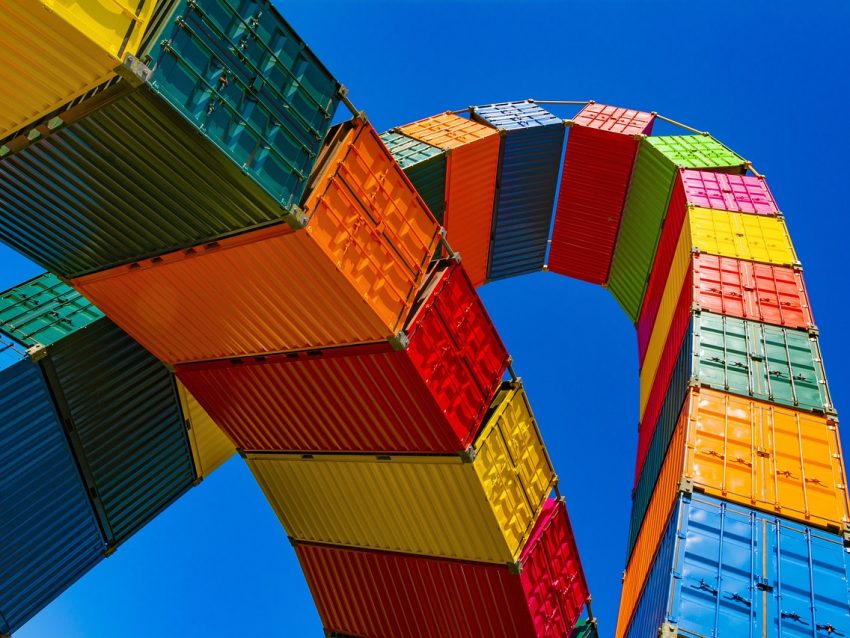
European customers are starting to choose road transport, especially for electronic products and dangerous goods. However, the industry is not expecting as busy a year as before. Rail transport has strengthened its position on the shipping market. Countries along the BRI route constantly promote land transport. The industry believes that there is still a huge space for the development of China-Europe rail transport.
- Sea freight
According to CPB World Trade Monitor data from May 25. global freight volumes decreased by 1,1% year-on-year in the first 3 months of 2023. After a decrease of 2,5% in February this year. and by 1,2% in January this year. cargo volumes increased by 0,2% in March this year. compared to the same period in 2022, providing the first cyclical indications that the shipping market has weakened significantly.
Habben Jansen, CEO of the world's fifth largest container shipping company, Hapag-Lloyd, recently pointed out that freight rates have fallen below cost. It seems that container transport is heading into the abyss of a price war. He hopes Christmas will give shipping companies the boost they need.
Industry insiders say shipping leaders are shifting their view from positive to relatively negative. MSC's CEO said in March. that they are positive about the coming months of 2023, and CMA CGM sees signs of recovery on the market. Evergreen Marine expects the market to recover from June this year. and improvement in the second half of the year. However, the reality differs from the predictions of the shipping giants and remains weak. Despite massive cancellations, freight rates have not increased.
Current spot rates:
Drewry:
Shanghai-Rotterdam: USD 1530/ FEU, -1% weekly, -84% annually.
Shanghai-Genoa: $216/ FEU, -1% weekly, -81% annually.
– S&P May 19:
North Asia-North Europe: $1/FEU May 175, down 19% weekly.
China-UK: $1,225/FEU, down 2% weekly.
– SCFI May 19:
Shanghai - Europe: down $1 to $869/TEU.
Shanghai - Mediterranean: up $4 to $1616/TEU.
Retailers warn that sales will slow in the coming months as consumers cut back on unnecessary and expensive items. To meet this challenge, carriers are restructuring to reduce costs and optimize operations.
- Road transport
The time of crossing the Kazakh-Chinese border was significantly shortened, while the border in Alashankou was shortened to 24 hours. In Horgos it is 2-3 days. Freight rates also fell due to a general decline in freight volumes. Rates from Kazakhstan to Poland are declining, and congestion at European borders has decreased, with an average border crossing time of 2 days.
European customers are starting to choose road transport, especially for electronic products and dangerous goods. However, the industry is not expecting as busy a year as before.
- Railway transport
From January to April this year, a total of 5611 trains carrying 609 TEUs of goods left China, an increase of 000% and 17% respectively. Among them in April there were 32 trains with 1459 TEU of goods, which means an increase of 160% and 000% (y/y) respectively. The number of trains crossing the western, central and eastern borders from January to April this year. increased by 25%, 45% and 25% respectively compared to the previous year.
Until May 24. More than 3000 trains were served at Horgos station in 50, with more than XNUMX% going to Central Asia.
Since the Russo-Ukrainian War, Russia has shifted its trade eastward, leading to an increase in the volume of rail freight from China to Russia. China Railway had to suspend loading several times due to massive congestion at the China/Kazakhstan and China/Russia borders.
Today, rail capacity shortages have diminished and freight rates have dropped significantly. The rate for a 40-foot container from Yiwu to Hamburg was around USD 6000 in the second half of May this year. compared to $8000 previously. At the same time, the SOC freight rate from northern China to Moscow fell to USD 5000/FEU, about 20% below the usual level.
Shanghai logistics figures say freight rates for exports from eastern China to Moscow have fallen from $8000-$9000 per 40-foot container since late March. up to $7000-8000 currently. Current rates may apply until the end of June. The average transit time for trains from China to Malta is 14-16 days, and to Duisburg and Hamburg 18-22 days.
The volume of rail transport cannot be compared to sea transport, but rail transport is more flexible and suitable for certain types of goods. Rail transport has strengthened its position on the shipping market. Countries along the BRI route constantly promote land transport. The industry believes that there is still a huge space for the development of China-Europe rail transport.
News:
France has announced the abolition of subsidies for Chinese electric cars
Previously, the purchase of electric vehicles in France could be subsidized up to EUR 5000. Due to the low price and excellent performance of electric vehicles from Chinese suppliers, 40% of French subsidies for electric vehicles went to Chinese cars in the first quarter of 2023. In order to strengthen the position of European producers, the French government decided to eliminate subsidies. The policy is not only aimed at Chinese manufacturers, but will also affect American brands such as Tesla.
Reducing container production
According to Drewry, from the first quarter of last year to the first quarter of this year, the production of 20-foot containers decreased by 71% year-on-year, from 1,06 million to 306 units. While Chinese data shows that orders for gas carriers and ships increased significantly y/y. One Chinese shipbuilder said the number of orders received so far has surpassed the 000 total.
The collapse of a leading freight forwarder
Freightwalla, one of the ten largest freight forwarders in the Asia-Pacific region, has ceased operations, resulting in the layoff of all employees. The founder of the company looked for merger and acquisition opportunities, but to no avail. Due to financial challenges, most companies are struggling to grow and Freightwalla has been unable to find new investors.
